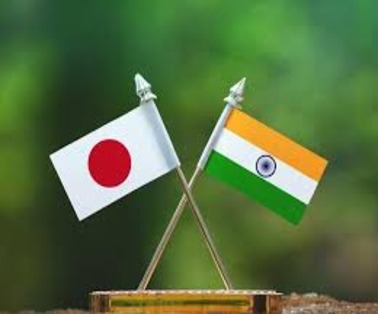In another historic first in the Indo-Russian relationship, a shipment of Russian coal arrived in India through the International North-South Transport Corridor (INSTC)
Key Developments in INSTC
- Two trains are currently en route to India via the International North-South Transport Corridor (INSTC).
- The consignment is scheduled to arrive at Mumbai port via the Bandar Abbas port in Iran.
- It was proposed in 2000, Two decades later, the INSTC has become active once again.
What is INSTC?
- INSTC is a land-and sea-based 7,200-km long network comprising rail, road and water routesThe North-South Transport Corridor is an ancient route that connected South Asia with North Europe for centuries.
- This route was used by the European, Indian, Russian and many other foreign traders. During the late 17th and early 19th centuries, Indian traders used this route to reach out to the Central Asian markets.
- The modern day INSTC is a multi-modal transportation route linking India Ocean and Persian Gulf to the Caspian Sea via Iran, and onward to northern Europe via St. Petersburg in Russia.
INSTC Routes and Corridors
Central Corridor: It begins from the Jawaharlal Nehru Port in Mumbai and connects to the Bandar Abbas port (Iran) on the Strait of Hormuz. It then passes through the Iranian territory via Nowshahr, Amirabad, and Bandar-e-Anzali, runs along the Caspian Sea to reach the Olya and Astrakhan Ports in Russia.
Western Corridor: It connects the railway network of Azerbaijan to that of Iran via the cross-border nodal points of Astara (Azerbaijan) and Astara (Iran) and further to Jawaharlal Nehru port in India via sea route.
Eastern Corridor: It connects Russia to India through the Central Asian countries of Kazakhstan, Uzbekistan, and Turkmenistan.
INSTC Member Countries
- The INSTC originated with a September 2000 intergovernmental agreement between Russia, Iran, and India which entered into force two years later.
- A total of 13 countries have since ratified the agreement, and the corridor could eventually stretch from Northern Europe all the way to Southeast Asia.
- Since then, INSTC membership has expanded to include 10 more countries (total 13)-Azerbaijan, Armenia, Kazakhstan, Kyrgyzstan, Tajikistan, Turkey, Ukraine, Syria, Belarus, and Oman.
Objectives of INSTC
The main objectives of the agreement are:
- Increasing effectiveness of transport ties in order to organise goods and passenger transport along the International ‘North–South’ transport corridor
- The promotion of access to the international market through rail, road, sea, river and air transport of the state Parties to this agreement
- Providing security of travel and safety of goods
- Harmonisation of transport policies as well as law and legislative basis in the field of transport for the purpose of implementing this Agreement.
Why INSTC is Important for India
- The network is expected to provide faster and more efficient trade connectivity between Europe and Southeast Asia
- INSTC will substantially reduce time taken and cost for transport of goods between India and Eurasia once fully functional and increase economic activities between India and the resource-rich Russia as well as markets of Europe
- The corridor has an estimated annual capacity between 20 and 30 million tons thanks to three main spurs.
- The Indian Federation of Freight Forwarders Associations estimates 30 percent cost and 40 percent transit time reductions compared to the Suez route.
What Brought INSTC Back Into Focus?
- Two dry runs were conducted in 2014 and 2017 on two routes to Azerbaijan via Iran and to Russia’s Astrakhan via the Caspian Sea.
- The studies thereafter found the INSTC more cost and time effective than the Suez Canal route
- Issues like insurance, documentation remained. But the INSTC has been operational since 2018-19. American sanctions [against Iran] slowed things down, but smaller shipments did flow before July 2022.
- In July 2022, the first major commercial consignment through the INSTC was sent from Russia to India.
- At the Caspian Sea Summit in Ashgabat, Turkmenistan, Russian President Vladimir Putin had referred to INSTC as a “transport artery from St Petersburg to ports in Iran and India”.
- In the following months, India’s trade deficit would expand sevenfold due to rapid imports of cheap Russian oil — from $4.86 billion in April-January FY 21-22 to $34.79 billion in the same period in FY 22-23.
- Reports began to suggest that the INSTC was Russia’s new “economic escape route” in the face of Western sanctions.
India’s Strategic Investments in INSTC
- INSTC allows India to bypass chokepoints like the Strait of Hormuz and the Red Sea (Suez Canal route), making its trade more secure.
- It connects India to markets in Russia, the Caucasus, and Eastern Europe, facilitating trade, energy cooperation, defense, counterterrorism, and cultural exchanges with Central Asian Republics through initiatives like “Connect Central Asia”.
- The INSTC facilitates India’s access to energy resources in Russia and Central Asia and can reduce reliance on the Middle East.
- Since the Russia-Ukraine war, imports of metallurgical coal from Russia have tripled, and are expected to grow amid declining imports from Australia.
- India has invested in the Chabahar Port in Iran’s Sistan-Balochistan province and signed an agreement for the INSTC, aiming to facilitate trade with Central Asian countries.
- Chabahar Port is essential for India, Iran, and Afghanistan as it offers direct sea access and trade opportunities in the region.
Conclusion
The INSTC is emerging as a transformative trade corridor for India — enhancing connectivity with Russia, Central Asia, Iran, and beyond. As geopolitical realities shift and India seeks supply chain resilience, the INSTC stands at the heart of New Delhi’s Eurasian strategy.
To Download Monthly Current Affairs PDF Click here
Click here to get a free demo
Discover all about CLAT Exam



